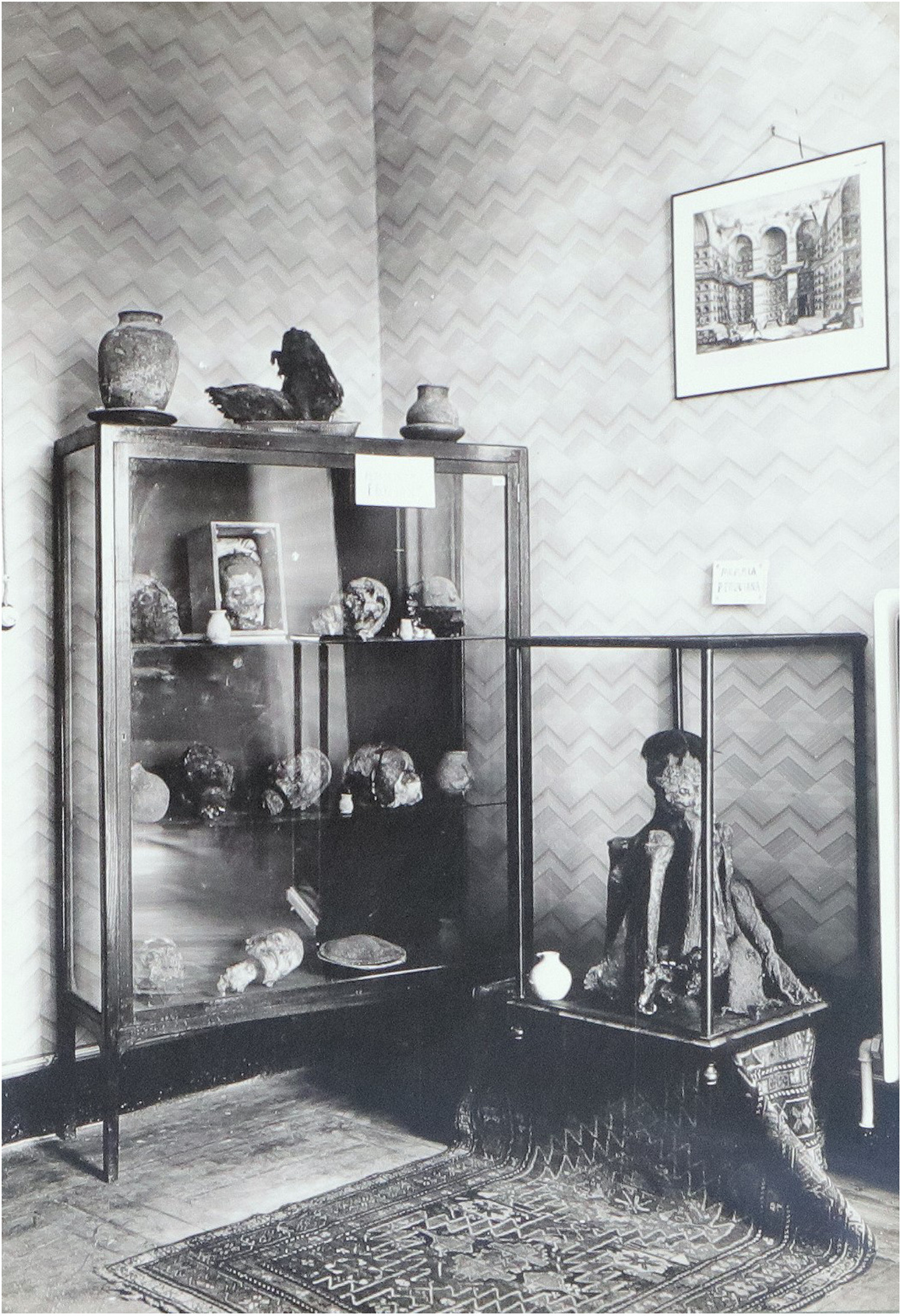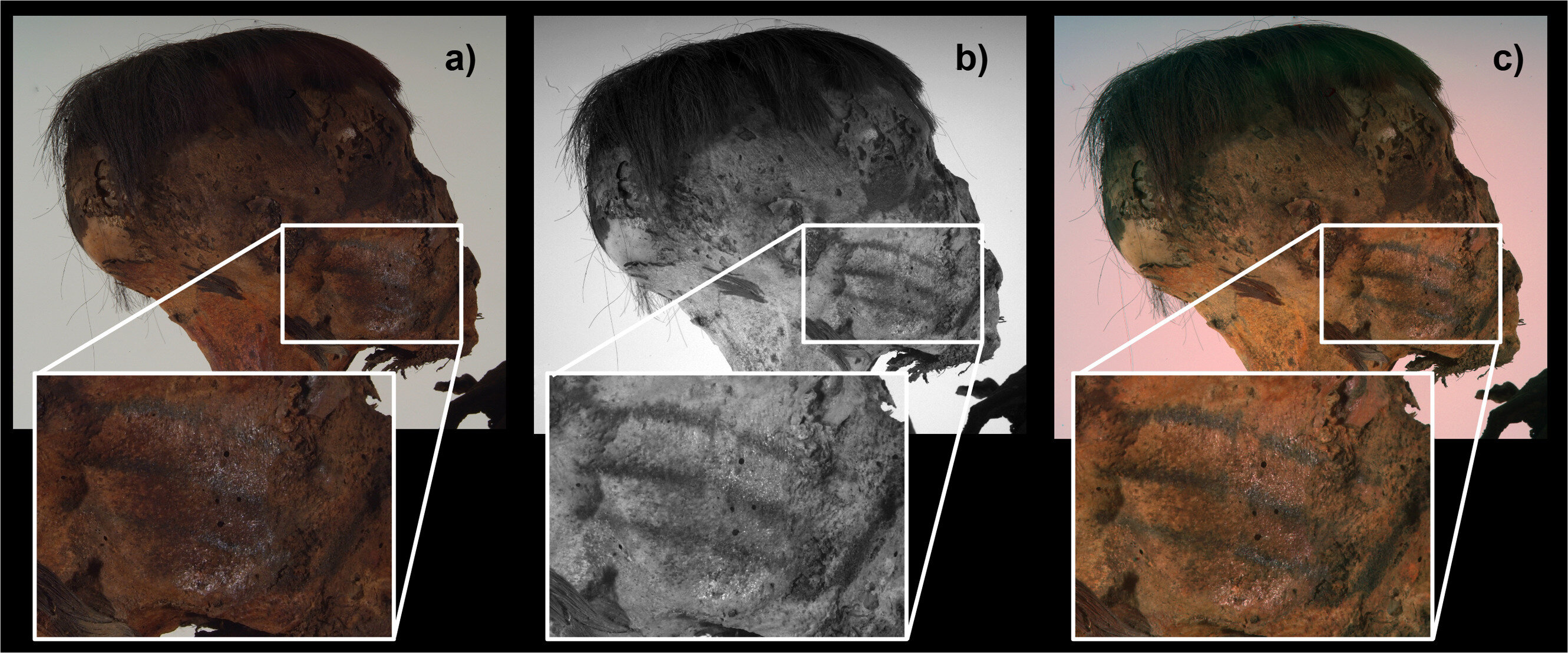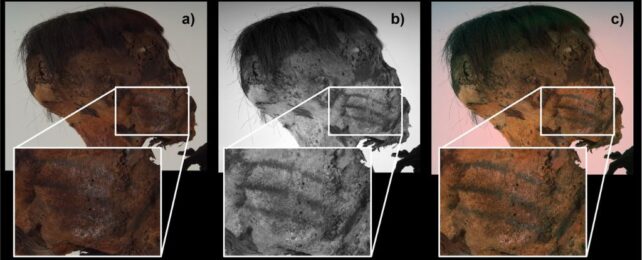South American mummies have become known for their impressive tattoos, but an analysis has found the design inked into the cheek of an approximately 800-year-old woman buried in the region is unique in many ways.
While we humans have been decorating ourselves with permanent skin art for thousands of years, evidence of the artwork is often lost to the sands of time. Tools have been found here and there, but it's rare for the tattooed skin itself to survive.
In South America, though, preserved tattoos are fairly common among millennium-old mummies, particularly because the coastal deserts where they were buried are ideal for protecting soft tissue like skin from decay.
A team of anthropologists and archeologists led by Gianluigi Mangiapane from the University of Turin in Italy have taken a closer look at the remains of one woman whose tattoos make her stand out from the crowd.
The exact origin of this particular mummy is unfortunately unknown, because her remains were donated to the Italian Museum of Anthropology and Ethnography nearly a century ago with essentially no context other than the Italian donor's name and the fact she was filed under 'South American artifacts'.

But there are some hints as to her origins. The way her body was seated in an upright, knees-bent position suggests a state of preservation known as a 'fardo', in which the corpse is wrapped in many layers of fabric and then tied into a bundle. This was a common funerary practice in Paracas culture in the Andean region, on the south coast of Peru.
Radiocarbon dating of the textile fragments that still cling to the woman's body revealed she lived between 1215 and 1382 CE.
Her tattoos are somewhat hard to see thanks to the mummification process darkening her skin, so the team used an array of non-destructive imaging techniques to get a better picture of the surprisingly minimalist designs.

An S-shaped tattoo adorns one of her wrists; a common placement for tattoos among South American cultures the time. Yet even that design is much simpler than those typically seen on the hands, wrists, forearms, and feet of their mummies.
What stands out most, of course, is the mummy's unusual cheek tattoos, which are also curiously simple in their design. Among ancient South American tattoos, the authors write, "cheek tattoos are less present (or underestimated due to difficulties in finding preserved skin)."
"The three detected lines of tattooing are relatively unique: in general, skin marks on the face are rare among the groups of the ancient Andean region and even rarer on the cheeks," they report.
Chemical analysis suggests the tattoo's black ink was made from magnetite, a black, metallic, and magnetic iron ore. That's unusual, too: archaeologists tend to assume black tattoo ink was made from charcoal, though the authors point out that few studies actually investigate the ink composition at a chemical level. This kind of pigment, the authors say, has not been reported in any other South American mummies.
"The intentional use of only charcoal pigments, which are the most commonly used materials according to the literature, can be ruled out in this case," they write.
"The results highlight the presence of magnetite, a commonly used material both in present and past cultures, as well as of other iron-rich phases of the pyroxene silicates group… with a small amount of carbon-based materials, possibly not intentionally added (e.g. due to pigment preparation procedures)."
What do her unique tattoos mean, you ask? Well, obviously they were meant to be seen by others, since they would not have been covered by clothing. But what they were meant to communicate, exactly, remains a mystery.
The research was published in Journal of Cultural Heritage.
